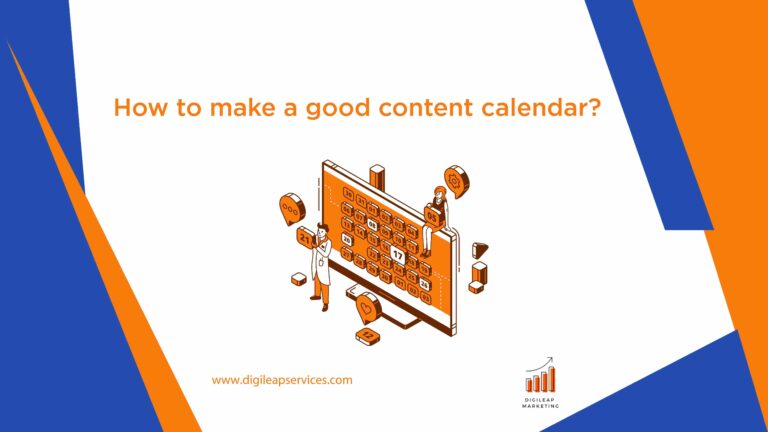How to make a content marketing plan
When you have a well-defined strategy and content marketing plan works best. Posting relevant and engaging content will drive traffic to your website and increase sales. However, if you have not thought through your strategy, you could be wasting your time and money. So, before you even consider posting content, you should conduct research and develop a strategy. A content strategy is a plan for using content (audio, visual, and/or written) to achieve business objectives. A successful content strategy will attract your target audience at each stage of the funnel and keep them engaged long after they have made a purchase.
When you develop a content strategy there are plenty of questions that you need to answer such as who will be reading content, what problem will you be solving for your audience, what makes you unique, what formats are you going to focus on, what channels will you publish on, and how will you manage content creation & publication. Answering these questions will lead you to make a content creation strategy framework.
Some content marketing plan:
- Set your objectives: – Understanding why you are creating content is the first step in developing your content marketing strategy. Do you want to increase the number of sales leads you generate? Do you want more visitors to your website? Or do you see content marketing to establish your brand’s authority? After you have decided on your goals, you will need to set some targets. Where possible, those goals should be quantifiable so that you can evaluate the success of your content marketing campaign.
- Define your target market: – Understanding your target audience is essential for effective content marketing. Assume you want to reach out to a specific demographic. In that case, you will need to know what those people like and dislike. You must also understand what type of content will appeal to your target audience. The following step in your content marketing strategy is to create a persona for your typical customer. The standard demographics of age, gender, location, and income should be included in the persona you create. It would be beneficial if you also considered your target audience’s interests, concerns, and motivators.
- Examine your competitors: – The next step is to research the competition you will face in attracting the attention of your target audience. But keep in mind that you will be competing for people’s attention and time with more than just your traditional competitors. There could also be content from news, reference, and entertainment websites that covers the same topics as your posts. When researching your competitors, take note of the types of content they are producing, and which appears to be the most successful. Find out what keywords they are targeting as well.
- Complete keyword and topic research: – Once you have determined your objectives and comprehended your target audience, the next step is to discover what they are looking for online. You will need to do some research on the keywords that people are typing into Google and other search engines. You can start by researching the search volume for the keywords you believe are relevant. Your keyword research will most likely produce some unexpected results and provide you with new content ideas.
- Examine your existing content: – You may also gain some useful insights from previously published content. So, investigate what types of posts have gotten the most attention and which pages of your website are currently receiving the most traffic. Also, research what keywords have been used by people to find your site. The performance metrics of existing content will assist you in developing a picture of the type of content that most interests your target audience.
- Plan your strategy: – The following step is to plan how you will use the information gleaned from your research. You will need to think about which platforms you will use to publish your content and how you will promote it. You must also consider the most appealing type of content for your target audience. For example, would white papers and blog posts be appropriate for your audience, or would videos and infographics be better? In most cases, a combination of various media options will be the best approach.
- Prepare your resources: – Your content marketing research will undoubtedly provide you with numerous ideas. But now you must consider what you can realistically accomplish with the resources you have. You must decide whether you will create content in-house or outsource content creation. You will also need to designate someone to manage your content marketing campaign, as well as someone to respond to comments and questions about your content. Because content marketing takes time, you must be realistic about how much time you can devote to your campaign.
- Make a content production schedule: – Now you must organize all of your ideas into a content publishing schedule. The schedule should include a calendar of publication dates as well as the personnel responsible for creating each piece of content. A publishing calendar will assist you in publishing content on a regular basis, which is essential in content marketing.
- Make, share & promote your content: – Each piece of content you create should be created with your goals in mind. Remember to use the keywords you discovered during your research. Most importantly, maintain high content quality. Do not rush through content creation just to meet a deadline on your content publishing calendar. You will also need to promote your content once it has been published. So, share your posts on social media and forward the content to anyone you think might be interested.
- Maintain & improve: – The final step in your content marketing strategy is to track the success of your campaign and, based on what has worked, refine your strategy as needed. Your content marketing strategy will evolve. As a result, you must be adaptable in your approach to content creation.
As the 10-step plan above shows, creating a content marketing plan is a cycle rather than a one-time task. As you progress, you will learn more about your audience and the content that works for them, and you will need to refine your strategy on a regular basis. However, the suggestions above should get you started on developing a content marketing strategy.












